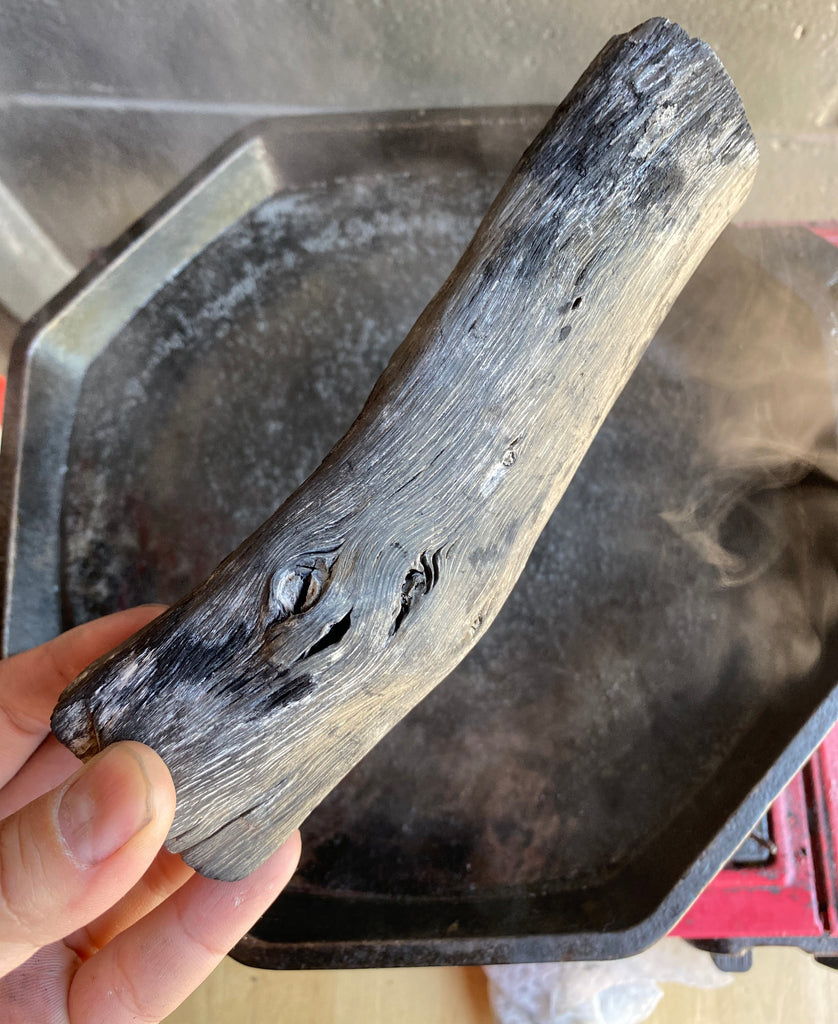Filter Your Water and Cook Your Rice with Binchotan Charcoal!
Charcoal is everywhere now. You see it in your soaps, toothpaste, and you've maybe even had a couple scoops of ice cream that were charcoal infused. Nowadays charcoal is popping up everywhere and in most cases, they’re in places you never think you needed it in. All these years that I’ve consumed charcoal, I had never really found out what was safe to use, and what the full benefits to using charcoal were. That all changed when I first started using Binchotan. This magical black lump of burnt wood has become a big part of my life, and I'm here to tell you all about it.
The first time I ever had charcoal in food was in downtown Vancouver, at a Japanese Ramen shop almost a decade ago. I was amazed by the black soup base, and though I couldn’t taste the charcoal I knew in my mind there was more to it than just a gimmick. So I asked them “why the charcoal?” - they pointed to a jug of water and in it I saw a piece of binchotan charcoal. They told me it was good for your health and I had to use a very special type of charcoal in order to do this. I didn’t think much about it back then until years later at Knifewear, when I got my hands on Binchotan.
*Before I get too deep into how charcoal works, please consult a physician before consuming charcoal if you are taking any sort of medication. In some cases, charcoal filtration can interfere with medicine, reducing its effectiveness or outright preventing it from working. Cooking using charcoal without directly ingesting it is perfectly safe, but please use caution before consuming charcoal directly!*

It's common practice to sanitize binchotan by boiling, before filtering with it.
So how does it work? First thing to know is how Binchotan differs from other standard charcoal used for BBQ. Check out this blog on how binchotan is made. One of the keys things to note is that the White Oak they use is denser, harder, and 95% pure carbon. Water contaminants are attracted to the surface of Carbon, and therefore charcoal filters the chlorine in the water and releases other nutrients like calcium, iron, and magnesium. The Japanese have been using this form of water filtration for many centuries now. You've probably have been using charcoal filters and didn’t even know it, because those big white clunky water filters that you replace every 2-3 months are made up of sand, gravel and charcoal.
What do you need to get started? Grab yourself a stick of binchotan about 5” long. Fill a pot of water and bring it up to a rolling boil. Place the charcoal in the water and boil for a minimum of 10 minutes. This sanitizes the charcoal. Not a necessity, but recommended. Normal charcoal should be activated first, but binchotan is porous enough that this is not required. Water contaminants are attracted to carbon surfaces and will hang on to the charcoal until it’s cooked with. Allow the charcoal to cool and dry, then place the stick of activated Binchotan into a 4L Jug of water and let it sit in there for an hour or two, allowing the charcoal to suck up the chlorine in the water. Take out the Binchotan and enjoy a glass of refreshing naturally filtered water. You can continue to use the charcoal for up to one month before cooking with it!
 Binchotan can be used to filter water over and over and over!
Binchotan can be used to filter water over and over and over!Now the fun doesn’t stop there, there are many more uses to Binchotan than a natural water filter! Try sticking a couple of small pre boiled thumb size pieces into a pot of rice and cook it how you normally would. When you taste the rice it won’t hit you immediately, but you will probably notice how clean, light, and airy the taste is when you chew it. Personally, I find rice to be the ideal way to taste the difference that Binchotan filtering makes.
Got stinky shoes? Maybe you got that nasty odor coming from your gym bag. Ever thought about replacing that old box of Baking Soda in your fridge with a stick of Charcoal to eliminate the smell? Binchotan can also filter out bad scents, and is a great way to keep things smelling fresh. It's hard to believe how well it works! It takes a little while, but you'll really start to smell the difference after the binchotan has spent 12 hours absorbing odour.

The list of things that binchotan can do goes on and on - much of it has to do with skin and health care, but as a chef I’m a bit more interested in how to cook with it, and how to let it elevate your food. It's even told in legend that a small 10cm piece of activated binchotan can make tempura much crisper, but we’ll save that for another time!





